KUMU HULA
AUNTY PAT NAMAKA BACON
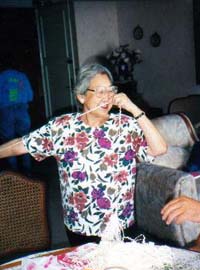 People tend to imagine a Kumu Hula (Hula teacher and professor) as a statue, imposing her figure wrapped in yards of fabric, adorned with maile and fern and flower necklaces, singing an unforgettable story.
People tend to imagine a Kumu Hula (Hula teacher and professor) as a statue, imposing her figure wrapped in yards of fabric, adorned with maile and fern and flower necklaces, singing an unforgettable story.
Personal appearance by Pat Bacon, her petite figure, soft features and humble demeanor certainly does not fit the preconceived image. Her strength is in inside.
Pat Namaka Bacon known to many as Aunty Pat, has been deeply immersed in Hawaiian culture since childhood. She is the adopted daughter of Mary Kawena Puku’i, the highest authority on Hawaiian culture and language, who died in 1986. Pat Bacon has shared her deep knowledge of things Hawaiian virtually all her life and her style is often called to conduct seminars Hula, to be a judge in the Hula and singing competitions and interpret texts in Hawaiian language.
She is considered a Loea of Hula, channeling her energy devoted to teach other teachers, as did her mother untilher death. She has shared the repertoire of oseph Ilala’ole with Mexico over the nine years that she came to Mexico..
Pat Bacon was born in Waimea, Kauai on February 10, 1920. Her Hawaiian name is “Namakauaahoaokawena’ulaokalaniikikalaninui” speaks of the proud look of passionate interest Kawena and linking the family Ka’u with the fire goddess Pele. When the interest of her hanai mother Kawena and linking the family to Ka’u, island of Hawai’i with the fire goddess Pele in the ancient culture was lost and to ensure that the old currents were not lost, she and her mother began to study with traditional hula practitioners as Joseph Ilala’ole and Keahi iahine.
All knowledge of Hawaiian culture, Pat Bacon she learned while growing up became her way of life. Today she is a retired source of culture in the archives of the Bishop Museum, which lists songs and other support materials as part of a project funded by the Native Hawaiian Culture and Arts Program.
She has worked at the museum for about 40 years and says “I enjoy the Hula now more than several years ago, young people are taking it more seriously and are returning to basics, more like the Hula as I remember, I think the Hula has become a full circle. “
KUMU HULA EARL PA MAI TENN
KA PĀ HULA MANU
Pa Mai was born in Kamehameha Homes, in Kalihi, O’ahu on October 18, 1940. As a child he would hear family singing and playing musical instruments with friends, and would be urged to dance. He liked the rhythm and harmony of the sounds and got up to dance with encouragement. His formal training of hula was with the Hawaii State Council of Hawaiian Heritage lead by Hoakalei Kamau’u. His teacher then was Napoka.
Then he studied with Henry Mo’ikehaokahiki Pa who collaborated with Mary Kawena Puku’i, He was with Henry for three and a half years giving him the name “Maikahikinapamaikala”. Henry Mo’ikehaokahiki Pa instilled the art of creativity, teaching the pa’i of the ipu, numerous dance routines both old and new. Pa Mai received all of Henry’s notes, implements and personal belongings.
He then studied with Maddy Kaululehuaohaili Lam who also collaborated with Mary Kawena Puku’i. Maddy taught him basic combinations, variations related to the patterns of rhythm and movement. The sensitivities of sight, sound, motion, smell, and touch through thought, word, deed and action.
Pa Mai was commissioned as a Kumu Hula for Ka Pa Hula Manu by St. Peters Church in Honolulu on February 7, 1980 by Reverend Franklin Chun.
He also studied with Rose Kapulani Joshua, learning hula auana and in 1986 she issued him a certificate as Kumu Hula from Magic Hula Studio.
He then studied and traveled with Morrnah Nalamaku Simeona, who taught him Ho’oponopono to obtain Peace, Balance, Wisdom and Love. Most important Becoming Whole: Expression Of The Hula By Knowing Thyself. While with Morrnah he received through her a name from PELE, “Pamaikaualililehuakenaikawaipunaolaniloa”.
Pa Mai founded Halau Ho’okipa Aloha at the Honolulu International Airport . The goal being to promote aloha though hula. He and his dancers have performed at various events at HIA. He also taught at Windward Community College since 1994 until 2012, both credit and not credit courses.
He is the co-founder of Ka Leo O Na Hula, AC, an association of hula teachers. He has taught basic choreography seminars, always emphasizing the importance of the basics on fundamentals of the hula.
Pa Mai says “My life has been evolving, in relation to the hula, my teachers have taught me with aloha (love), they never charged me. Uncle Henry Pa would say he had just scratched the surface and Pa Mai replies so have he.
He emphasizes teaching the basics first. The stronger your foundation, you can build higher without it cracking, He also advises: “Know yourself through the hula, the hula can be a tool to discover yourself. And always remember that you must do the dance with aloha (love).
MEL KAHOKULOA LANTAKA
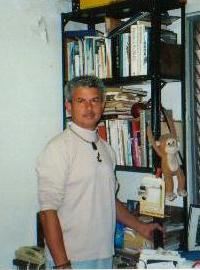
“My training began in the Hula at half my adolescence during the resurgence of interest in Hawaiian culture, in the early 70’s. My first teacher of Hula Ku’uleilani Margaret Reiss, taught me Hula and Hula Kahiko auana in Haleiwa, Oahu, where I was born. I took the Hula Kahiko with total passion, I was emotionally attracted to it.
My training continued with Ceci Kawai-o-Kawa’awa’a Akim who also taught in Kane’ohe Kahiko Hula O’ahu. At the same time a session of Hula for men with Nathan Napoka in Nu’uanu, O’ahu. All these teachers were Hula teachers under the auspices of the Foundation for Culture and Arts of the State of Hawai’i led Kamau’u Hoakalei.
In the early 80’s I finished my training in hula under the tutelage of Earl Pa Mai Tenn, my two years with him were of great interest since I started the Hula’Auana because until that point I had been studying hula kahiko.
Not only have I taught modern hula kahiko and but also the traditional way of making necklaces of flowers and leaves in Hemingway Hall as part of the optional subjects at the University of Hawai’i at Manoa.
In the early 1990s I began to travel to Paris, France every 6 months or so to give seminars on Hula and Leis preparation. Subsequently I have been teaching in Japan and Mexico to date, both Hula and Hawaiian culture. I have been invited to judge in the area that evaluates the technical International Hula Competition. My main activity is the making of leis (for hula competitions, shells and snails, primarily). Also floral concocted for hotels and social and cultural events.
I have never forgotten the passion and discipline of my teachers to teach the Hula. Seeking to maintain its bases teaching the fundamental (basic steps of Hula), accurately and correctly. That is the foundation of the Hula. I belong to a tradition that seeks to preserve the Hula, Oli Chant unchanged by the great respect and love I have for my culture. “
KUMU HULA LORRAINE JOSHUA DANIELS
HULA MAGIC STUDIO
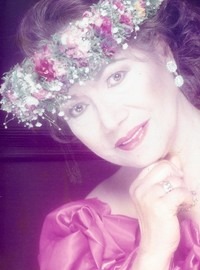
Lorraine Daniels, daughter of Rose Kapulani Joshua, taught by her mother at the Magic Hula Studio in Waikiki. She helped coordinate a Polynesian show for Maunaloa restaurant in Cancun, Mexico.
“I was trained first by my mother but she wanted her children to have a broad education in the hula so, my first teacher (kumu) outside the family was Ms. Clark Ku’ulei should be Ku’ulei Clark. I graduated in the traditional way with Ms. Clark and then took me to Aunt Louise Akeo and then with Mrs. Po’omaikai who is better known as Hannah Ho.
The last kumu with which I had formal training was Henry Pa, who gave me the basics in the ancient hula. He inspired me to improve myself as a student and I thought he was a very strict teacher with great affection for his haumana (students)
In the late 1930’s I began to dance more actively with the group of my father, “Moana Entertainers.” We present ourselves abroad on the continent and in places such as Honolulu Waikiki Sands, Lau Yee Chai and the Princess Theater. Over time people began to approach me to ask if they could teach, that’s how I began my career as a teacher. I taught at my mother’s house and learned that a kumu have to get involved in teaching with ones whole being. You have to discipline yourself and your lifestyle if you hope to stay healthy and taught
My mother had the greatest influence on me. She sent me several kumu but in fact they all had a similar dance style. The traditional hula which was always done with your feet flat (flat-footed) with simple hand movements and not very ornate. Many people today seem to prefer the traditional hula has changed to Western dance styles, becoming a dance with a series of poses more than the flow of movements of hula. Ultimately, the responsibility of these changes depends on the kumu of new teachers today. The dancers and teachers now are only a reflection of education and ideas of their kumu.
I think contemporary and traditional at the same time because I allow creativity within the framework of traditional hula. I think it’s very important to know the language because it is the key to enter the Hawaiian culture. If you know the language, then you can understand and discover the interpretation of the song (chant) and understand the meaning and logic of what you’re dancing. Language is the key to managing creativity within the framework of traditional hula. “
TEACHER ANA MARÍA NOELANI LÓPEZ SERRANO
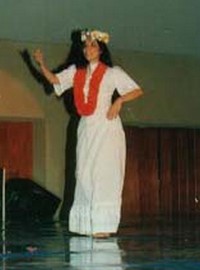
She began her dance training with Lily Polynesian Men in Mexico City for 3 years and then with different teachers, including Maggie Nelson (mother) and Monica Nelson. She began teaching Polynesian dance since 1976, both in their own school, “Otea tiare” and for several years at the National Polytechnic Institute where she was also Coordinator of the Polynesian Dance Workshop. She currently teaches at his school in Mexico City and Pachuca, Hidalgo.
In 1989, looking closer to the roots of hula to expand her knowledge of Hawaiian culture she attended a presentation of a Hawaiian dance group and a course in the city of Puebla where she met Earl Maikahikinapamaikalā Tenn. kumu hula (Pa Mai). She was so motivated and interested in the authentic forms of the hula that immediately came to Hawaii where she began her training with Pa Mai and who has since been the advisor of the civil association “Ka Leo O Nā Hula, AC”, founded by Anita Noelani Lopez along with four Mexican teachers 24 years ago.
Since then she has studied with Pa Mai, Mel Kahokuloa Lantaka, Aunty Pat Namaka Bacon and Lorraine Joshua Daniels. She has attended seminars by Pua Kanaka’ole, Nani Lim Yap and Ray Fonseca.
For 23 years she has been the president of Ka Leo O Nā Hula Festival and organized a seminar each year during that period. She has also organized the annual festival of dance Tahitian “Heiva Mini” for more than 12 years. Within the work that Professor Anita performs its main objective is that people who attend the seminars learn to respect and appreciate the teachings according to the traditions and customs of the teachers because it is the only way to preserve them.
TEACHER MARINA SERVIN PEÑA
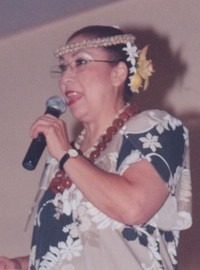
I have the pleasure of belonging to the association or Ka Leo Nā Hula since its founding.
Dancing since the tender age of 4 years is not forgotten memory, I alleviated bad memories or anxieties through dancing and is so pleasing that you start to love the art of movement that became a necessary part of my life.
I started my studies at the age of 14 with Mexican Folk dance at diverse institutions as the INBA National Institute of Fine Arts, School of Amalia Hernandez, the school of Master Tizoc and in different courses that taught me to learn a little about my country and there are a lot of studying to continue to know all Mexican states since we are very rich to have such a variety of dances in each state of the Republic. These studies allowed me to get my certificate to teach from pre-school to university level.
Currently I teach at the Renaissance Institute at kindergarten, throughout the Primary level and, I also taught at the Anglo Spanish Preparatory, in Manuel Acosta Normal School where I graduated as a teacher, and the beginners and intermediate workshops on Hawaiian and Tahitian dance at the ITESM. I also teach at my school that I founded 40 years ago and is called DANCE School of MARINA.
My curiosity about other types of Dance Dance led me to the Hawaiian and Tahitian.
I thank the teachers and Ms. Concepcion Pantoja Nelson Magui that started teaching me at age 16 in the knowledge of these beautiful cultures of the Hawaiian Islands and Tahiti that vibrate with their beautiful melodies and exotic rhythms and how else I can thank to life but through Ka Hula Nā Leo or other institutions that we know in improving your technique and correction of mistakes and get closer to the correct interpretation of Hawaiian and Tahitian Dance, following the teaching that we convey our kumu hula for the knowledge and purity with the respect they deserve.
Thanks Pa Mai Tenn, thanks Aunty Pat Namaka Bacon thanks Mel Lantaka, Lorraine K. Daniel Makau Foster and many masters, from the depths of my being at the 60 years old I just turned. I am neither the best nor the most intelligent teacher, but I am that God gave me my anguish and pain that I was removed by merely feeling the music and dance.
Thanks for letting me write this with a sense of sincerity and love. For every teacher that I have passed on their knowledge.
TEACHER PATY KAWAHINE’IMINA’AUAO CONSTANTINO
Paty began learning Polynesian dances at the YMCA in 1974 in Mexico City and later in various academies and her main Mexican teachers: Maria Elena Rojas, Jenny Velasco, Ana Maria Lopez and Miriam Novelo. Began teaching Polynesian dance since 1984, both in their own school, “‘Uhane Pono”, as in several academies and cultural centers of Mexico City, Cuautla, Morelos, Tepic, Nayarit and York, England.
Since the beginning of her training in hula, Paty has felt a great interest and love for Hawaiian culture so since 1990 she began attending the Seminars and Festivals organized yearly by “Ka Leo O Nā Hula, AC” She also participated for 3 consecutive years in the festival organized by the association, winning prizes in the first three places. Paty decided to withdraw from the festivals to collaborate with Leo O Ka Hula Nā, AC as an interpreter-translator of Hawaiian teachers and for support in organizing events.
Her main training has been with Earl Maikahikinapamaikala Tenn. kumu hula (Pa Mai), Aunty Pat Namaka Bacon, Mel Kahokuloa Lantaka and Lorraine Joshua-Daniels. She has attended classes and seminars taught by Aunty Cecilia Akim, Nani Lim Yap, Ray Fonseca, Mark Ho’omalu and Keali’i Rechiel. In 2007 she attended a cultural tour based at the University of Hawai’I, Windward Community College. In 2009 she participated in the 3rd World Hula Conference on O’ahu where she took classes with Taupori Tangaro, Melia Lobenstein, Hao and Hokulani Holt Kapi’olani-Padilla.
Paty is passionate about the culture of Hawaii since she has found it contains universal values that have given her personal fullfiment and helped her become a better person, spiritually, physically and emotionally. She also thinks that there is much wisdom in the traditions of Hawaii and have many similarities with those of our indigenous people and ancestors. She takes very seriously her studies of history, language, geography, anthropology and culture in general. She has understood that they have much to do with the hula and everything that makes a human being. She feels great respect and is concerned about the disappearance, loss and degeneration of the traditions and wisdom of indigenous peoples and defines herself as a: preservationist whose goal is to understand and love the best of both cultures and bring it to her own life and that of those around her.
TEACHER VIRGINIA HERNÁNDEZ MOYA
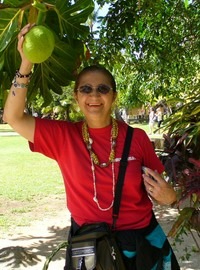
Starts Polynesia teaching dance in 1980, with child and youth groups.
She was prepared with the Prof. Maria Del Carmen Garcia A., in the city of Puebla, Pue. She teaches at various levels Madero school at the University of Puebla (UMAD) and its Academy Iolani School.
Attends seminars taught by kumu hula Pa Mai Tenn., Aunt Pat Namaka BAcom, Melvin Lantaka, Lorraine J. Daniels, Ray Kahikilaulani Fonseca, Makau Foster, Adrian Cier Foc Citlalli Arenas Ayala, Ana Maria Lopez Serrano, Alma Rosa Moreno, Clara Snell.
She has participated in competitions held annually by Ka Leo O Nā Hula AC in Mexico City. She is co-founder along with UMAD authorities, the Festival-Seminar Nā Ka Leo O Hula AC in the city of Puebla.
She participated with her group in the 19 th. International Dance Festival in Athens Greece in 2004.
She was invited by the Inter-American Confederation of Professional Dance to perform with her group in Asuncion, Paraguay, being invited by the Mexican Embassy in that country in February 2007.
She performed with her group in Buenos Aires, Argentina in February 2007.
In 2007 she attended a cultural tour based at the University of Hawai’I, Windward Community College.
TEACHER EDWINA NOELANI MAHOE
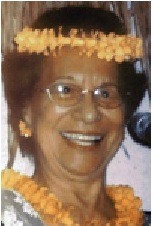
Singer, Musician, Hula Teacher
Author, historian, musician, singer, recording artist, teacher of hula and music, and show producer, Edwina Noelani Kanoho Mahoe is a master of Hawaiian music, a pioneer who has contributed greatly to its perpetuation. In the early 1960’s, Noelani formed the Leo Nahenahe Singers with Ethelynne and Mona Teves and Lynette Kaopuiki. In 1964, along with Kaupena Wong, they were the first Hawaiian performers invited to perform at the world-renowned Newport Folk Festival, at the request of American icon Pete Seeger. In 1996, Noelani was a finalist for Best Female Vocalist in the Na Hoku Hanohano music awards. She has received many Hawaii Music Awards and the prestigious Lifetime Achievement Award from the Hawai`i Academy of Recording Arts.
Noelani taught music and hula in the influential Parks and Recreation programs of Honolulu in the 1960’s, and formed the Waimanalo Keiki chorus who performed widely, producing popular recordings. In 1971, she joined her friend, late Hawaiian visionary Dr. George Kanahele, in forming the Hawaiian Music Foundation, and the first Hawaiian Music Conference. She coordinated slack key, falsetto and steel guitar concerts throughout Hawai`i. She coined the phrase “leo ki`eki`e” to describe the falsetto voice, and received approval from the Hawaiian Dictionary author Mary Kawena Pukui — the term was added to the dictionary in 1985.
She has been a music judge for many Kamehameha Schools Song Contests, has worked for years with the visitor industry as a cultural consultant. She has developed many educational curricula centered on Hawaiian music.
In 1974, Noelani produced the TV series “Na Mele Hawai`i” capturing many masters on film — its archives are valued sources. She currently coordinates the music and hula shows at the International Market Place in Waikiki.
Noelani is well-known for Na Mele O Hawai`i Nei, A Hundred and One Hawaiian Songs, co-authored with Dr. Samuel H. Elbert. This book is on the shelf of nearly every hula dancer and singer of Hawaiian music.
Her hula background is a unique as Noelani’s life, having studied privately with hula master Tom Hiona from 1953 to 1961, when he gave her permission to teach. She also learned specific hula from Alice Keawekane, Lena Machado and others.
KULANIAKEA ” LANI GIRL ” KALEIKI-AHLO
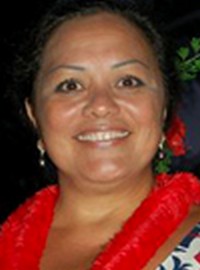
Ilima Hula Studio Owner, which was founded between 1956 and 1957 by her mother Louise Kahilio’kalani Kaleiki and her friend Dottie Ortiz. Her mother was famous as a musician, plus she had an extraordinary voice. She made several recordings with artists such as Aunty Emma Kamaka, Sonny Chillingsworth, Vicky Rodriguez, Pauline Kekahuna, to name a few. Aunty Dottie played with her mother Louise for several years, and thus also continued to reach a successful career.
Lani Girl had moved away from the Hula for several years, but after the death of her mother Louise in 1978 and Aunty Luka (Louise’s younger sister) in 1983, she became the sole owner of the school and was once again when found the love of Hula and dancing, which was instilled by her mother and Aunty in previous years. Since 1983 he has taught Hula, and a few years ago was stimulated by Uncle George Na’ope, Aunty Aloha Dalire, Frank Kawaikapuokalani K, Hewitt, Buzzy Histo, Willie “Va’a” Leong, and many others, to begin teaching style Ancient Hula.
She visited Mexico last year, 2009, to support Ka Leo O Na Hula, AC as a juror at festivals and teaching kahiko.
DENISE KA’UHIONAMAUNA KIA RAMENTO
Denise Ka’uhionamauna Kia Ramento is an original ‘Ilima Sweet Heart of the prestigous Na Kumu Hula Luka and Louise Kaleiki of The ‘Ilima Hula Studio of Honolulu. She has been dancing hula since she was 7 years old. At the age of 19, Denise recieved her ‘uniki from her Kumu and began her teaching career as a Kumu Hula.
In 1971, she founded the group Pupukahi Ote’a, along with her twin brother Dennis Kia.
In 1990, the group name was changed to Aloha Pumehana O Hawai’i. Her dance troupe has participated in numerous dance festivals and dance competions in both Hula and Tahitian. She is married to Jimmy Ramento. They have 6 children, 5 sons and 1 daughter. Jimmy has been her greatest supporter. Jimmy Ramento is polynesian drummer and has assisted Denise in the training of drummers.
Their greatest acheivements has been to instill the passion and love of the Polynesian artfrom of dance within their children, who continue to perpetuate their legacy. Today the dance troupe is known as the award winning group Heretama Nui. Denise continues to teach hula for Halau O Ka’uhionamauna in Waipahu, O’ahu. And serves as the Director of Entertainment for the Roberts Hawai’i Ali’i Kai Catamaran Dinner Sail. She provides the quality entertainment for the visitors to Hawai’i on board the nightly dinner sail. Today, Denise continues to provides her guidence to her children and assists in the training of the dancers of Heretama Nui. She continues the teachings of her Kumu.
TEACHER ELIZABETH RAMIREZ CAMPILLO

Let me begin with these words:
“THANKS TO LIFE THAT HAS ALWAYS GUIDED MY STEPS TO LEARNING THE HULA”.
I began my investigation of Hula in 1970 in the city of Mexico City with the teacher Maria Eugenia Chavez King, who after a few months invited me to continue my studies at school Maggie Nelson (Mom), where I continued my training in Polynesian dance for over three years.
Because of my Father’s work, we felt the need to change our residence to the beautiful city of Guadalajara, and not finding at the time a school that gave Polynesian dance classes, sadness came over me, thinking I would have to give up to one of my great pleasures, and I needed to travel regularly to Mexico City to continue my training, now with teacher Maggie Nelson (Daughter). Fortunately after two months of living in Guadalajara, one of the best schools hired me as a teacher in the field, and that’s how I began my career as a teacher of Polynesian dance, making presentations since then to date in several theaters, cultural centers, and Museum of the City of Guadalajara, and surrounding areas.
After a few years for the second time, I had to stop my dancing career, both as a teacher due to an injury suffered in the back dancing contemporary dance at the University of Guadalajara, under the guidance of renowned Master Onesimus Gonzalez, I was , and so I was forced to withdraw from all my activities for five years.
The love for dancing, and my love for Polynesian dances, brought me back as a dancer, and soon after as a teacher. Happy to resume my activities in Polynesian dances wanting to increase my knowledge in the field I began my search, which led me to a trip I took to the beautiful islands of Hawai’i, to witness one of the most famous events The “Merrie Monarch “. I lived in this magnificent event a wonderful experience: “I was enjoying the best groups of Hula and I witnessed how a Kumu Hula was quietly eating and every student of his who approached him, he gave them food in the mouth. He exuded such love to do, which I missed at the time, and everything around me disappeared. At that moment just knew and felt what the word “Aloha” means, and I thought, “I want a teacher like that.” Upon my return to Guadalajara, I decided not to teach until I find a Kumu Hula to guide me.
Four years later in 2001, life for the third time I return to the path of Hula’s taking me to Mexico City where I had the good fortune to meet the Kumu Hula Earl Maikahikinapamaikalā Tenn. (Pa Mai), advisor to the civil association “Ka Leo O Nā Hula, AC “directed by teacher Ana Maria Lopez Serrano Noelani, and I was fascinated and grateful for that meeting as a Kumu Hula Pa Mai emanating from the” ALOHA “from every pore. Since that day I have taken workshops with him and with others as Kumu Hula: Kumu Hula Ray Fonseca’s (Rest In Peace), Mel Kahokuloa Lankata, Kumu Hula The Hula Lorraine Joshua Daniels Magic Studio, and the late Kumu Hula Poni Kamau ‘u.
In 2005, I made an invitation to Pa Mai to come to the city of Guadalajara to teach a course, and on that trip he rewards me with the Presidency of “Ka Leo O Na Hula of Guadalajara.”
Happy and grateful to life, and accepted that responsibility, because I love the Polynesian dances since the Hula is my great love.


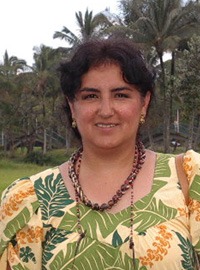
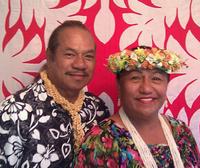

 English
English  Español
Español